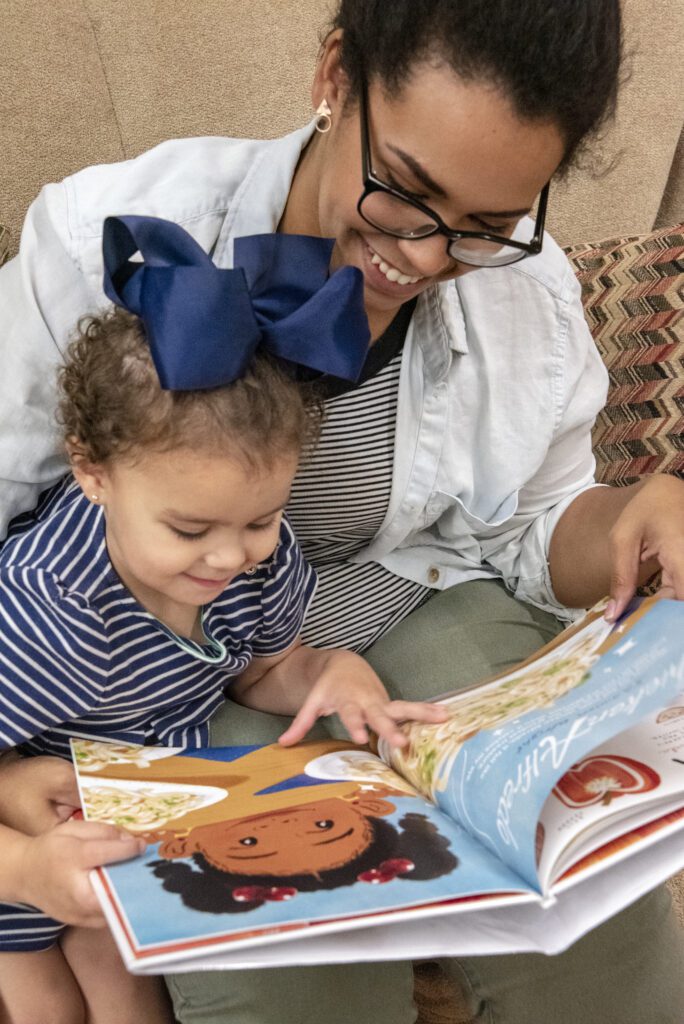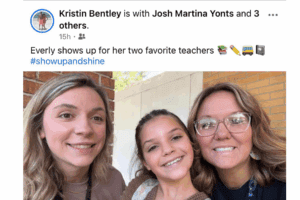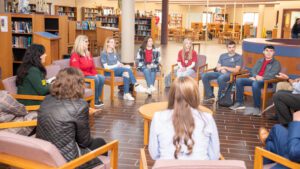Editor’s Note: This blog post is co-authored by Dr. Felicia Cumings Smith, President & CEO of the National Center for Family Learning, and Dreama Gentry, Chief Executive Officer of Partners for Rural Impact. Both are native Kentuckians with decades of experience leading transformative education and literacy initiatives.
In George Ella Lyon’s children’s book Come a Tide, a young Appalachian watches as late winter rains swell the creeks and the receiving river grows beyond its banks, flooding her mountain community. The rain comes “down like curtains” and water rises through gardens, yards and homes. But after the devastation, something remarkable happens. Making friends with their shovels, everyone ‘digs out’ together, clearing debris and starting the hard work of rebuilding.
As Kentucky natives who have dedicated our careers to education – even while facing down real floods ourselves – this story’s message of community resilience resonates deeply. For Felicia, who leads national family literacy initiatives, Lyon’s story illustrates how crisis can lead to breakthroughs when people stick together. For Dreama, who drives rural education partnerships across the country, the story reflects how authentic change must be rooted in the strengths and realities of place.
Yet the harsh reality is that for millions across Kentucky and America, reading even a simple storybook like Come a Tide remains inaccessible.
The Rising Crisis
The literacy crisis in America is not receding—it’s rising.

The Preschool Learning Activities Survey found that the proportion of children whose families read to them has fallen by an average of 12% from pre-pandemic levels, representing hundreds of thousands of children missing critical early literacy experiences that build the foundation for reading success.
The picture is even more concerning in K-12 education. The Nation’s Report Card (from the National Assessment of Educational Progress) reveals that reading scores for 4th graders dropped two points from the last assessment in 2022 and five points from pre-pandemic levels. Similar declines were observed for 8th graders.
The economic consequences of these trends are staggering. The Barbara Bush Foundation for Family Literacy estimates that low literacy costs the U.S. economy $2.2 trillion annually in lost productivity, lower wages, and increased healthcare and social service expenses. In states like Kentucky, where manufacturing, healthcare, and technology sectors are growing, employers increasingly struggle to find workers with the literacy skills needed to fill available positions, leaving good jobs vacant while too many remain unemployed or underemployed.
Last month, the U.S. Department of Education released billions of dollars in education grant funding to states—money that had been held up for weeks. These funds include millions for adult education programs, after-school, and summer learning programming. While the release of these funds and proposed Department priorities aimed at K-12 literacy are a step in the right direction, we would encourage the Department, funders, and other key leaders to strongly consider the importance of multigenerational approaches to improving reading and literacy outcomes.
Both of our organizations have decades of experience with breaking intergenerational cycles of low literacy and engaging communities to create real change for educational outcomes. This work requires approaches that bridge early childhood, K-12 students, adult learners and community partners—equipping entire families with the support they need to thrive.
Rewriting Our Future
We need your help to stem the tide of low literacy. Like neighbors responding after a flood, we need your commitment to mobilize resources, coordinate efforts, and refuse to leave anyone behind. What you can give will depend on where you sit.
Public and private funding is critical to scale approaches that strengthen both child and adult literacy. For policymakers, this means passing comprehensive policies that support literacy development across the lifespan, with special attention to transition points where learners often fall through the cracks. For private funders, it means giving priority to approaches that build local capacity, honor community knowledge, and create sustainable infrastructure for ongoing educational support.
Families, too, must recognize their irreplaceable role in literacy development. Even parents who struggle to read can support their children’s literacy by telling stories, discussing daily activities, asking questions, and creating language-rich environments. In states like Kentucky, where family ties run deep and oral storytelling traditions remain strong, these cultural assets are potent tools for literacy development when families are supported in using them. We have seen, time and again, how multigenerational approaches that invite families to learn together have the power to break cycles of poverty and strengthen the entire family unit.
Community institutions—like libraries, schools, businesses, and healthcare providers—also have essential roles to play. Librarians can extend their reach beyond their physical walls through mobile services. Teachers and principals can reimagine family engagement to welcome parents as true partners, working together for the benefit of children. Business leaders can support employee literacy and create family-friendly policies. Healthcare providers can integrate literacy promotion into well-child visits.
We have seen the undeniable impact of community strategies like these in action. Like the neighbors in Come a Tide, we know that when we unite with a common purpose, even in the face of crisis, we can create worthy new futures for all.

Showing Up Together: Stories of Attendance in Action
When September began, I asked a simple question: “Why be at school?” Over the past few weeks, I’ve seen that question answered in classrooms, homes,

The Power of Striving Together
Last week I had the opportunity to attend my first StriveTogether Cradle to Career Network Convening. On my flight to Atlanta, I kept thinking about

One of 15: Rosie Stafford Earns Prestigious GPC Certification
We are thrilled to share that our Program Manager, Rose-Linda “Rosie” Stafford, has joined an elite group of just 15 professionals in Kentucky to earn

Why Be at School? Because the Future Is Built One Day at a Time
As National Attendance Awareness Month begins, I think back on 30 years in education—and it’s not the ceremonies or milestones I remember most, but the

Rural AmeriCorps: Building Communities from the Inside Out
— Dreama Gentry, President and CEO, Partners for Rural Impact AmeriCorps is often framed as an urban program, where young people travel to unfamiliar cities

Turning the Page on Our Literacy Crisis Will Require All of Us
Editor’s Note: This blog post is co-authored by Dr. Felicia Cumings Smith, President & CEO of the National Center for Family Learning, and Dreama Gentry,
